I've got a training app written in winapi So, I've got GL initialized there and I've got node-based system, that can be described by couple of classes
class mesh
{
GLuint vbo_index; //this is for having unique vbo
float *vertex_array;
float *normal_array;
unsigned int vertex_count;
etc.. //all those mesh things.
....
}
class node
{
bool is_mesh; //the node may or may not represent a mesh
mesh * mesh_ptr; //if it does then this pointer is a valid address
}
I've also got 2 global variables for keeping record of renderable mesh..
mesh **mesh_table;
unsigned int mesh_count;
Right now I'm experimenting on 2 objects. So I create 2 nodes of type mesh::cube with customizable number of x y and z segments. Expected behaviour of my app is let the user click between 2 of the nodes CUBE0, CUBE1 and show their customizable attributes - segments x, segments y, segments z. The user tweaks both objecs' parameters and they are being rendered out on top of each other in wireframe mode, so we can see the changing in their topology in real time.
When the node is being created for the first time, if the node type is mesh, then the mesh object is generated and it's mesh_ptr is written into the mesh_table and mesh_count increments. After that my opengl window class creates a unique vertex buffer object for the new mesh and stores it's index in the mesh_ptr.vbo_index
void window_glview::add_mesh_to_GPU(mesh* mesh_data)
{
glGenBuffers(1,&mesh_data->vbo_index);
glBindBuffer(GL_ARRAY_BUFFER ,mesh_data->vbo_index);
glBufferData(GL_ARRAY_BUFFER ,mesh_data->vertex_count*3*4,mesh_data->vertex_array,GL_DYNAMIC_DRAW);
glVertexAttribPointer(5,3,GL_FLOAT,GL_FALSE,0,NULL);//set vertex attrib (0)
glEnableVertexAttribArray(5);
}
After that the user is able to tweak the parameters and each time the parameter value changes the object's mesh information is being re-evaluated based on the new parameter values, while still being the same mesh instance, after that VBO data is being updated by
void window_glview::update_vbo(mesh *_mesh)
{
glBindBuffer(GL_ARRAY_BUFFER,_mesh->vbo_vertex);
glBufferData(GL_ARRAY_BUFFER,_mesh->vertex_count*12,_mesh->vertex_array,GL_DYNAMIC_DRAW);
glBindBuffer(GL_ARRAY_BUFFER,0);
}
and the whole scene redrawn by
for (unsigned short i=0;i<mesh_count;i++)
draw_mesh(mesh_table[i],GL_QUADS,false);
SwapBuffers(hDC);
The function for a single mesh is
bool window_glview::draw_mesh(mesh* mesh_data,unsigned int GL_DRAW_METHOD,bool indices)
{
glUseProgram(id_program);
glBindBuffer(GL_ARRAY_BUFFER,mesh_data->vbo_index);
GLuint id_matrix_loc = glGetUniformLocation(id_program, "in_Matrix");
glUniformMatrix4fv(id_matrix_loc,1,GL_TRUE,cam.matrixResult.get());
GLuint id_color_loc=glGetUniformLocation(id_program,"uColor");
glPolygonMode( GL_FRONT_AND_BACK, GL_LINE );
glUniform3f(id_color_loc,mesh_color[0],mesh_color[1],mesh_color[2]);
glDrawArrays(GL_DRAW_METHOD,0,mesh_data->vertex_count);
glBindBuffer(GL_ARRAY_BUFFER,0);
glUseProgram(0);
return true;
}
The problem is that only the last object in stack is being drawn that way, and the other object's points are all in 0 0 0, so in the viewport it's rendered one cube with proper parameters and one cube just as a DOT


QUESTION: Where did I go wrong?